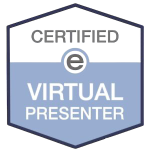In today’s fast-paced workplaces, communication goes beyond just words. Studies show that nonverbal communication accounts for up to 93% of all daily interactions, with 55% based on body language and 38% on tone of voice. Understanding body language can help you build better professional relationships, make persuasive arguments, and lead more effectively. This post dives into essential nonverbal communication techniques that can elevate your workplace interactions.
1. The Power of Nonverbal Communication
Nonverbal cues play a significant role in workplace communication. In fact, research suggests that we form impressions of others within the first seven seconds, often relying heavily on body language. According to a study by Forbes, 73% of job seekers feel that their body language contributed significantly to the outcome of their interviews. Learning to harness these cues can improve team dynamics, increase trust, and foster a collaborative environment.
2. Key Nonverbal Techniques to Master at Work
a. Posture and Presence
Your posture communicates a lot about your confidence and approachability. Slumping can imply disinterest, while an upright, open posture shows confidence and openness.
- Tip: Stand with your feet shoulder-width apart, and avoid crossing your arms, which can appear defensive.
- Fact: A study from Harvard Business Review showed that adopting a “power pose” for two minutes increases testosterone levels by 20% and reduces cortisol by 25%, helping you feel more assertive and less stressed.
b. Eye Contact for Connection
Maintaining steady eye contact shows that you are engaged and confident. However, overdoing it may appear intense or confrontational. Aim to maintain eye contact about 50-60% of the time during conversations.
- Tip: Practice the “3-second rule” – look into someone’s eyes for three seconds, then glance away naturally.
- Stat: Studies reveal that people who maintain appropriate eye contact are 31% more likely to be perceived as trustworthy by their peers.
c. Understanding and Managing Facial Expressions
Facial expressions are universal indicators of emotions. A warm smile, a slight nod, or a raised eyebrow can make or break interactions, especially in multicultural environments.
3. Body Language in Team Dynamics
Effective teamwork often depends on more than words. Subtle cues like head nods, forward leans, and mirrored gestures signal empathy and active engagement. Harvard Business School notes that teams with higher nonverbal sensitivity are 42% more effective in collaboration.
- Fact: Studies show that people subconsciously mirror each other’s body language as a form of rapport-building.
- Tip: Notice when team members mirror your gestures; it’s often a sign of mutual understanding and agreement.
4. Handling Misinterpretations
Body language interpretation is not an exact science. A gesture can mean different things depending on cultural backgrounds and individual personalities.
- Tip: Look for clusters of cues rather than a single gesture to ensure accurate understanding.
- Fact: Communication experts agree that interpreting body language accurately requires observing a combination of gestures and verbal cues. In fact, relying on clusters rather than isolated gestures increases interpretation accuracy by 30%.
For more detailed guidance on understanding body language, consider reading Understanding Body Language by Antoni Lacinai, a practical guide with over 50 gestures decoded for professional success.
5. Using Body Language for Leadership
For leaders, conveying confidence, openness, and approachability through nonverbal signals can transform team dynamics. Research from Deloitte suggests that 65% of employees feel more engaged when their leaders exhibit open body language.
- Fact: Leaders who maintain an open posture and avoid closed-off gestures are more likely to be seen as approachable and trustworthy.
- Tip: Use open hand gestures when presenting ideas. It demonstrates transparency and invites trust.
In Summary
Nonverbal communication is a powerful tool in any professional’s arsenal. By understanding body language and applying it effectively, you can improve workplace relationships, enhance team collaboration, and elevate your leadership presence. Becoming aware of nonverbal cues and practicing subtle changes in your body language can make a significant difference in your workplace interactions.
Take your understanding to the next level with Understanding Body Language by Antoni Lacinai – an insightful book for professionals eager to master workplace communication.



